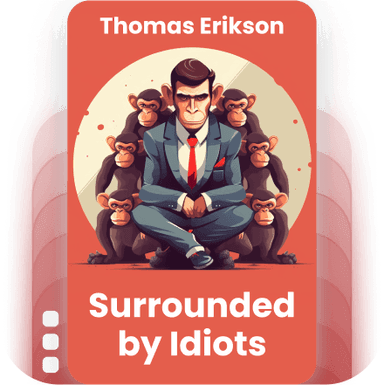
The Five Dysfunctions of a Team: A Leadership Fable
Patrick Lencioni
4.2 - 5 ratings
10
List Points
10
Chapters
5
Topics
Description
In his insightful work, Patrick Lencioni delves into the fundamental issues that undermine team effectiveness, portraying these problems through a compelling fable about a fictional company. Through the narrative, Lencioni identifies five core dysfunctions that can hinder team performance: absence of trust, fear of conflict, lack of commitment, avoidance of accountability, and inattention to results. He not only explains these dysfunctions but also provides practical strategies and actionable steps to overcome them, helping leaders and team members build a cohesive, high-functioning team capable of achieving exceptional outcomes.
What will you learn?
By reading this book, you will gain crucial insights into the common pitfalls that sabotage team effectiveness and discover practical strategies for overcoming these dysfunctions. The book delves into the five core dysfunctions — absence of trust, fear of conflict, lack of commitment, avoidance of accountability, and inattention to results — that can derail team performance. Through engaging storytelling and actionable advice, you'll learn how to foster a culture of trust, encourage healthy conflict, ensure commitment to decisions, hold team members accountable, and focus on achieving collective results, ultimately transforming your team into a cohesive and high-performing unit.
Who’s it for?
• Team leaders seeking to improve effectiveness.
• Business executives aiming to enhance organizational health.
• Managers looking to foster better team collaboration.
• HR professionals focusing on team development.
• Coaches and consultants working with leadership teams.
Categories
Key Learning
Available chapters to listen for this topic- 1
Understanding the Core Dysfunctions
Identifying the fundamental reasons behind team failures and addressing the root issues that undermine team performance, using the pyramid model as the foundational framework and acknowledging the five key dysfunctions. - 2
Building Trust Among Team Members
Establishing and nurturing genuine trust within the team; encouraging vulnerability, fostering interpersonal relationships, and creating a safe environment for open communication and honesty. - 3
Embracing Healthy Conflict
Encouraging productive conflict as a tool for improving decisions by promoting open debate, candid discussion, and challenging ideas without fear of retaliation among team members. - 4
Achieving Commitment and Buy-In
Ensuring that all team members are fully committed to decisions by fostering clarity, addressing concerns, establishing clear expectations, and promoting ownership of collective decisions. - 5
Creating Accountability Within the Team
Developing a culture of accountability by encouraging peer-to-peer accountability, setting clear standards, and holding each team member responsible for their performance and behavior. - 6
Focusing on Collective Results
Prioritizing team results over individual goals by cultivating a results-oriented mindset, aligning team objectives, and celebrating collective achievements to drive team performance. - 7
Addressing Absence of Trust
Recognizing and resolving the mistrust issues that hinder team collaboration and cohesiveness by promoting transparency and building mutual respect. - 8
Overcoming Fear of Conflict
Identifying and tackling the reluctance to engage in constructive conflict, highlighting the benefits of healthy disagreement, and guiding teams to utilize conflict as a strategic tool. - 9
Countering Lack of Commitment
Addressing the root causes of indecision and ambiguity in team commitments by promoting clarity, seeking consensus, and making timely decisions. - 10
Combating Inattention to Results
Ensuring that the team remains focused on the desired outcomes by tracking progress, setting measurable goals, and holding each member accountable to the team’s objectives.
























